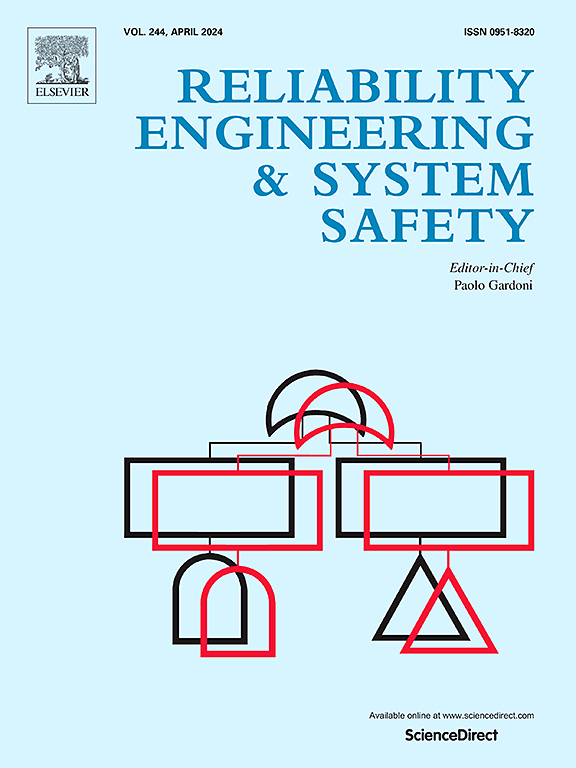可变性响应函数的概念及其在随机系统中的应用综述
IF 11
1区 工程技术
Q1 ENGINEERING, INDUSTRIAL
引用次数: 0
摘要
精确的结构随机分析往往是复杂的,因为需要详细的概率信息,关于底层材料/几何特性的随机空间变化。对于许多相关的特性,如柔韧性或弹性模量,通常可能只确定它们的平均值和从可用的测量数据的标准偏差。另一方面,大多数可用的随机结构模型都需要了解描述不确定系统特性的随机场的边际概率分布函数和功率谱(相关函数)。可变性反应函数(VRF)的概念在35年前出现,作为这种全随机分析的替代方案。VRF可以以最小的计算成本完成以下任务:(i)仅基于系统属性的均值和方差建立随机响应可变性的可实现上界,(ii)计算给定功率谱的响应方差,(iii)对响应方差进行完整的灵敏度分析,该响应方差相对于功率谱的形式建模不确定的材料/几何属性。㈣提供有价值的见解,说明波动的不同波数/波长/尺度如何影响响应方差的总体值。自其最初用于一维线性弹性结构的响应位移以来,VRF概念已扩展到处理具有多种随机材料特性的多维结构的位移,内力,特征值和均质(有效)特性,表现出非线性弹性本构行为,并且在其特性中具有很大的随机变化。考虑到VRF的长时间跨度和大量的工作,本文对所有这些以前的发展提供了急需的概述,这些发展应该对寻求进一步开发VRF方法或将这些方法应用于实际工程问题的研究人员有用。本文章由计算机程序翻译,如有差异,请以英文原文为准。
Review of the concept of variability response function and its application in stochastic systems
Accurate stochastic analysis of structures is often complicated by the need for detailed probabilistic information about the random spatial variation of the underlying material/geometric properties. For many relevant properties, such as the flexibility or the elastic modulus, it is often possible to determine only their mean and standard deviation from the available measurement data. On the other hand, the majority of available stochastic structural models require knowledge of both the marginal probability distribution function and power spectrum (correlation function) of the stochastic field describing the uncertain system properties. The concept of Variability Response Function (VRF) emerged more than 35 years ago as an alternative to such a full stochastic analysis. The VRF can accomplish the following at a minimal computational cost: (i) establish realizable upper bounds on the random response variability based only on the mean and variance of the system properties, (ii) compute the response variance for a given power spectrum, (iii) perform a complete sensitivity analysis of the response variance with respect to the form of the power spectrum modeling the uncertain material/geometric properties, (iv) provide valuable insight into how different wavenumbers/wavelengths/scales of fluctuation contribute toward the overall value of the response variance. Since its initial inception for the response displacement of one-dimensional linear elastic structures, the VRF concept has been expanded to address displacements, internal forces, eigenvalues, and homogenized (effective) properties of structures in multiple dimensions, with multiple stochastic material properties, exhibiting nonlinear elastic constitutive behavior, and having large stochastic variations in their properties. Given the long timespan and the large body of work on VRFs, this paper provides a much-needed overview of all these previous developments that should prove useful to researchers seeking to develop VRF methods further or apply the approaches to practical engineering problems.
求助全文
通过发布文献求助,成功后即可免费获取论文全文。
去求助
来源期刊

Reliability Engineering & System Safety
管理科学-工程:工业
CiteScore
15.20
自引率
39.50%
发文量
621
审稿时长
67 days
期刊介绍:
Elsevier publishes Reliability Engineering & System Safety in association with the European Safety and Reliability Association and the Safety Engineering and Risk Analysis Division. The international journal is devoted to developing and applying methods to enhance the safety and reliability of complex technological systems, like nuclear power plants, chemical plants, hazardous waste facilities, space systems, offshore and maritime systems, transportation systems, constructed infrastructure, and manufacturing plants. The journal normally publishes only articles that involve the analysis of substantive problems related to the reliability of complex systems or present techniques and/or theoretical results that have a discernable relationship to the solution of such problems. An important aim is to balance academic material and practical applications.
 求助内容:
求助内容: 应助结果提醒方式:
应助结果提醒方式:


